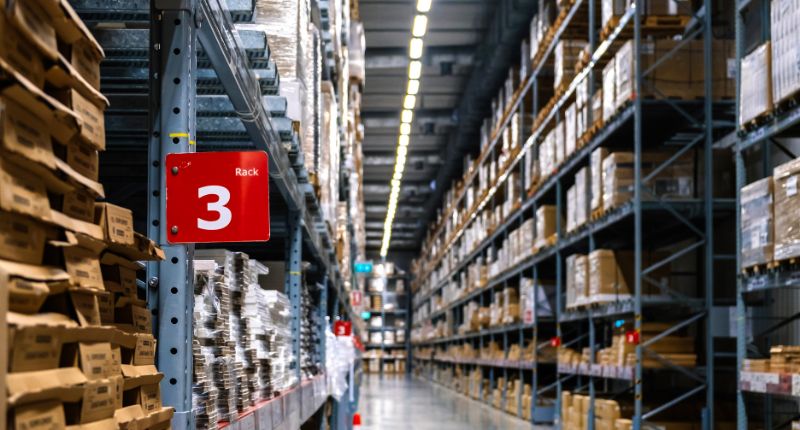
- Australia's industrial assets oversees $1.2 trillion worth of products annually.
- Industrial facilities play a vital role in Australia's economy, impacting supply chains and consumer prices.
- Findings highlight the urgency of expanding industrial space to meet growing consumer demands.
A whopping $1.2 trillion worth of products passes through Australia’s industrial assets each year, revealed a new report by Oxford Economics Australia.
Quantifying the impact of Australia’s ‘sheds’
Commissioned by the Property Council of Australia (PCA), the research found that around 38% of household consumption in 2022 was from goods moving through industrial assets, including distribution centres, warehouses, and manufacturing facilities.
Put differently, that is $423 billion worth of consumer products.
The value of goods through Australian industrial assets

The largest users of industrial assets were transport, postal and warehousing businesses, followed by retail and wholesale trade, at 31%, 26% and 11% respectively.
Share of industrial asset square metres, by industry

PCA group executive policy and advocacy, Matthew Kandelaars, said the report demonstrated how vital industrial assets were to Australia’s economy and how it is imperative that there be enough of these assets to increase productivity and sustain efficient business activity.
“This is the first time we’ve been able to quantify the value of goods moving in and out of Australia’s industrial facilities, and the number – more than a trillion – is significant,” he said.
“While they don’t always attract the same attention as other forms of real estate, industrial facilities are critical to not only moving goods into Australian homes, but they are also our gateway to the world, with more than half of the goods moving through our sheds being imported or prepared for export.”
More ‘big sheds’ needed to cope with rising consumer demand
Kandelaars emphasised that it was crucial for Australia to build more warehouse space near metropolitan areas to facilitate the popularity of online shopping and consumer demand for swifter deliveries.
“Just like the residential market, where we know about the impact of tight vacancy rates on renters, the supply of warehouses is also drastically short, with vacancy rates in industrial sites sitting around one per cent across the country.”
“And just like in housing, the lack of supply can have major negative flow on effects on delivery times, logistics and of course cost.”
Matthew Kandelaars, PCA
“When you buy something online, whether you’re a business or an individual, it must go through a series of industrial facilities, and a shortage of space may mean purchasers could be in for longer wait times and higher prices.”
According to the report, 44% of goods moving through industrial locations were consumed by other businesses locally or overseas. Additionally, 34% went to Australian homes, while 54% were imports or exports.
Zoning and planning laws need to be scrutinised
Kandelaars argued that the findings underscored the need for zoning and planning law reform to rectify bottlenecks preventing the speedy supply of more industrial assets, and consequently, the smooth functioning of our nation’s supply chains.
“The pandemic showed exactly how important efficient supply chains are for our economy,” he said.
“Finding suitable land for warehouse facilities is a tough task, with land and zoning constraints, delays in utility connections, inadequate public transport and infrastructure and encroachment on industrial corridors putting strain on the market.”
“Meeting the needs of our growing population will require increased industrial assets. The important role these assets play in our economy cannot be understated.”
Kandelaars added that the urgency to release additional land was relevant in both greenfield and urban areas.
“Industrial zoned and development-ready land close to our population centres is needed to keep supply chain costs low and delivery structures efficient,” he said.
“One solution includes the development of multi-storey warehouses – going up, not out – to optimise space, which is a common and growing practice worldwide.
“Our planning systems need to be flexible and encourage investment in a property class that every Australian relies on.”







